What Are Automated Chatbot Solutions and How to Build Them

Automated chatbot solutions are transforming how businesses interact with customers. These tools simulate human conversations, offering quick and efficient responses to customer inquiries. According to McKinsey, AI-enabled customer service is the fastest way to deliver personalized experiences. High-performing companies are over twice as likely to use AI chatbots, highlighting their growing importance.
No-code chatbots make this technology accessible to everyone. They allow you to create intelligent bots without programming skills. Platforms like Sobot simplify chatbot creation with user-friendly interfaces, enabling businesses to automate 30% of routine tasks. This approach saves time, reduces costs, and improves customer satisfaction.
Understanding Automated Chatbot Solutions
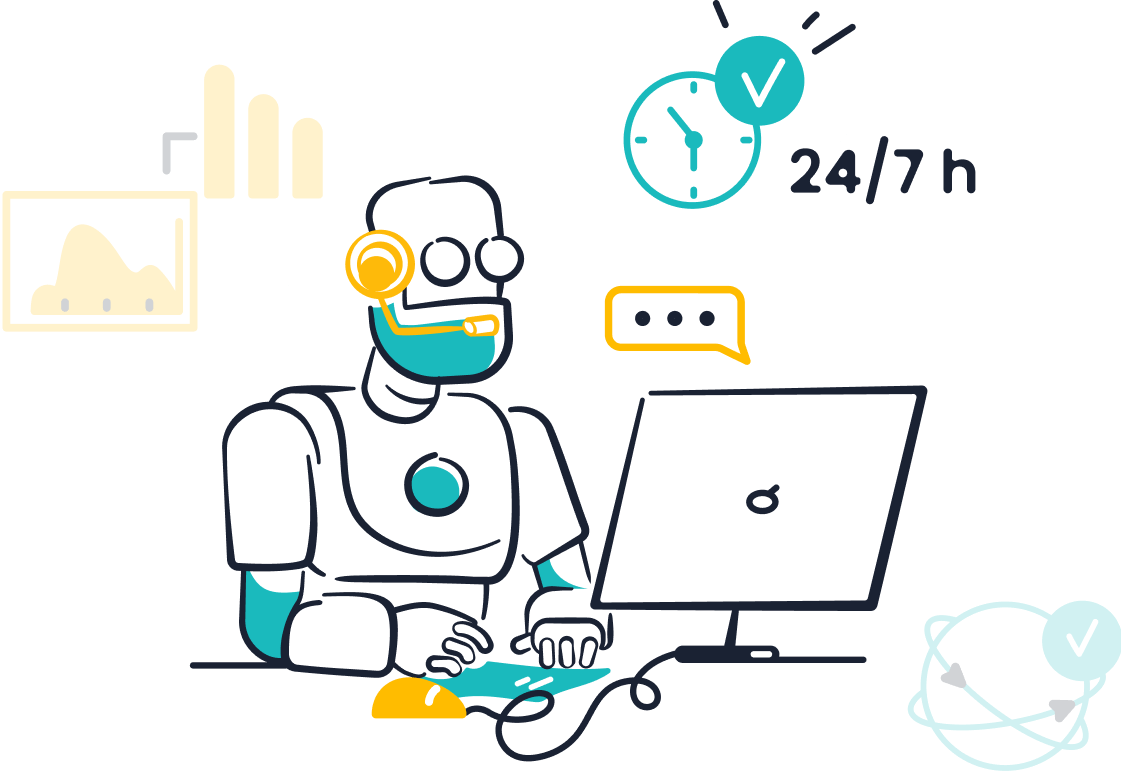
What Are Automated Chatbots?
Definition and purpose of chatbots in customer service.
Automated chatbots are software tools designed to simulate human conversations. They help businesses manage customer interactions efficiently by providing instant responses to common queries. These solutions are widely used in industries like retail, finance, and gaming to improve customer service. For example, Delta Airlines uses a chatbot to assist passengers with flight details and baggage updates, enhancing their travel experience.
A recent study shows that 62% of customers prefer interacting with chatbots over waiting for a human agent. This preference highlights the growing demand for faster and more accessible customer support. Additionally, businesses using chatbots report a 90% improvement in complaint resolution speed, making them a valuable asset for customer service teams.
How automation enhances customer interactions.
Automation allows chatbots to handle repetitive tasks, such as answering FAQs or processing returns, without human intervention. This capability reduces wait times and ensures customers receive consistent and accurate information. For instance, chatbots can resolve up to 58% of returns and cancellations, freeing up human agents to focus on complex issues. By integrating AI and natural language processing (NLP), chatbots can also understand customer intent, making interactions more personalized and engaging.
The Rise of No-Code Chatbots
What makes no-code chatbots unique?
No-code chatbot solutions stand out because they eliminate the need for programming skills. These platforms use drag-and-drop interfaces, enabling anyone to design and deploy a chatbot quickly. This accessibility empowers small businesses and startups to adopt automation without hiring technical experts.
Key features of no-code chatbot platforms like Sobot Chatbot.
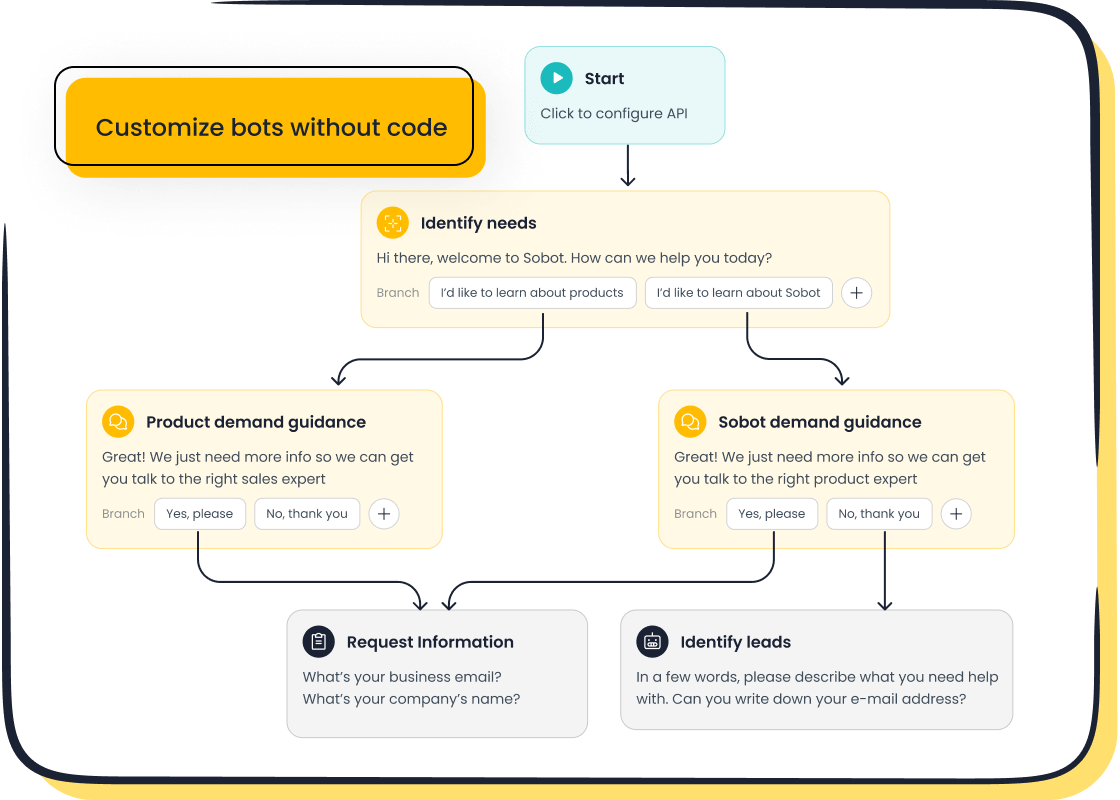
Sobot Chatbot exemplifies the power of no-code platforms. It offers a point-and-click interface, multilingual support, and 24/7 availability. Businesses can use it to automate up to 80% of routine tasks, saving time and reducing costs. Its AI-driven features, such as proactive messaging and real-time assistance, also boost customer engagement and conversion rates.
Benefits of Automated Chatbot Solutions
Cost savings and operational efficiency.
Chatbots can save businesses up to 30% on customer support costs by handling routine inquiries. They also improve productivity, with an average ROI of 1,275%. For example, Sobot Chatbot enhances efficiency by solving regular queries autonomously, reducing the need for additional agents.
Scalability for businesses of all sizes.
Automated chatbot solutions are scalable, making them suitable for both small businesses and large enterprises. They can handle thousands of interactions simultaneously, ensuring consistent service during peak times. This scalability allows businesses to grow without compromising customer support quality.
Enhanced customer experience and engagement.
Chatbots improve customer experience by providing instant, accurate responses. Studies show that 69% of customers use chatbots for quick answers, while 80% are willing to use them if they can switch to a human agent when needed. Sobot Chatbot’s omnichannel support ensures seamless interactions across platforms like WhatsApp and SMS, further enhancing engagement.
How No-Code Chatbots Work
Technology Behind No-Code Platforms
Drag-and-drop interfaces for easy chatbot creation.
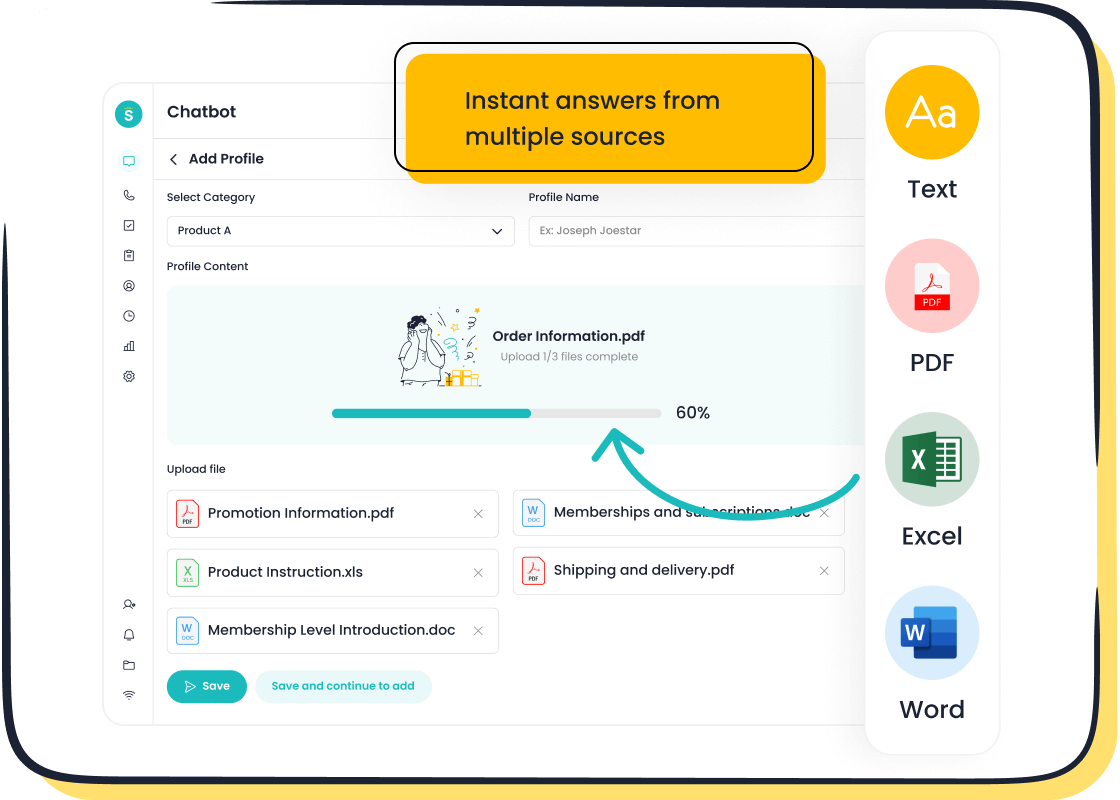
No-code platforms simplify chatbot creation by using drag-and-drop interfaces. These tools let you design conversation flows visually, making the process intuitive and accessible. You don’t need programming skills to build a chatbot. Instead, you can select pre-built components, such as greeting messages or FAQ responses, and arrange them to match your needs. For example, Sobot Chatbot offers a point-and-click interface that allows you to create workflows in minutes. This feature is especially helpful for small businesses that want to automate customer interactions without hiring technical experts.
AI and natural language processing (NLP) integrations.
AI and NLP are the engines that power no-code chatbots. They enable your chatbot to understand and respond to customer queries in a human-like manner. With NLP, the chatbot can interpret the intent behind a question, even if it’s phrased differently than expected. AI enhances this by learning from past interactions to improve future responses. Platforms like Sobot Chatbot use these technologies to provide multilingual support, real-time assistance, and data-driven insights. Here’s a breakdown of how these features work:
| Feature | Description |
|---|---|
| Multilingual Support | Enables chatbots to communicate in multiple languages, enhancing accessibility for diverse users. |
| Customization | Allows users to tailor the chatbot's language, tone, and dialogue flow to align with brand voice. |
| Data-Driven Insights | Empowers users to make informed decisions quickly by interpreting data without technical barriers. |
| 24/7 Availability | Provides constant customer support, improving satisfaction and operational efficiency. |
| Integration with APIs | Facilitates seamless interaction with existing systems, enhancing personalization and user experience. |
Examples of No-Code Chatbot Builders
Overview of platforms like Sobot Chatbot, Chatfuel, and Landbot.
Several no-code platforms make chatbot creation easy. Sobot Chatbot stands out with its AI-powered automation, multilingual capabilities, and omnichannel support. It’s designed to handle up to 80% of routine tasks, saving you time and resources. Chatfuel and Landbot also offer user-friendly interfaces and customizable templates. These platforms cater to businesses of all sizes, helping them improve customer engagement and operational efficiency.
Comparison of features and use cases.
Each chatbot builder has unique strengths. Sobot Chatbot excels in scalability and integration, making it ideal for businesses with high customer interaction volumes. Chatfuel is popular for its simplicity, often used by small businesses for social media automation. Landbot focuses on interactive designs, suitable for lead generation and surveys. While all three platforms offer drag-and-drop interfaces, Sobot Chatbot’s advanced AI features and 24/7 availability make it a comprehensive solution for modern customer service needs.
Step-by-Step Guide to Create a Chatbot with No-Code Tools
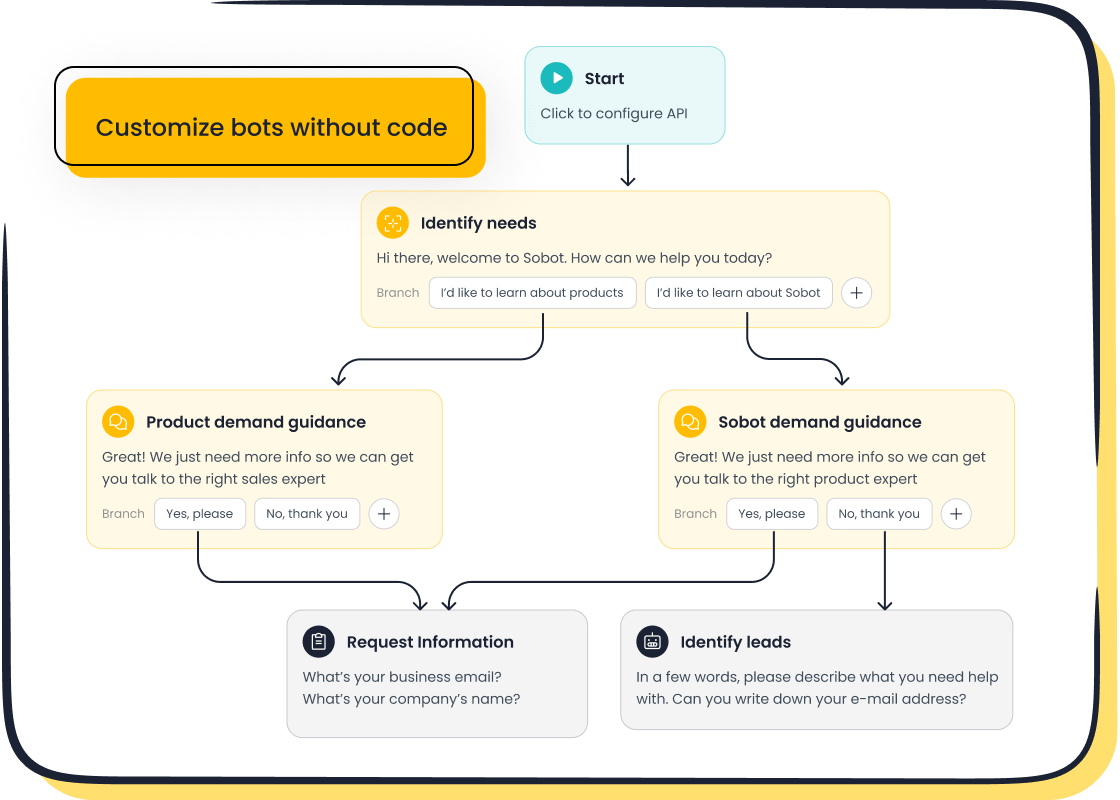
Step 1: Define the Chatbot’s Purpose
Identify the problem the chatbot will solve.
Before you create a chatbot, identify the specific problem it will address. A clear purpose ensures the chatbot meets user expectations and avoids frustration. For example, chatbots designed to handle FAQs or process returns can reduce customer wait times. However, poorly defined goals often lead to negative experiences. Consider the following data:
| Statistic | Finding |
|---|---|
| 80% | Consumers felt more frustrated after interacting with a chatbot. |
| 78% | Consumers needed to connect with a human after chatbot interaction. |
These figures highlight the importance of defining a clear purpose to improve customer satisfaction.
Understand the target audience and their needs.
Understanding your audience is crucial. Identify their pain points and preferred communication styles. For instance, younger users may prefer quick replies, while older users might value detailed explanations. Tailoring the chatbot to these preferences ensures better engagement and usability.
Step 2: Choose a No-Code Chatbot Builder
Factors to consider when selecting a platform.
Selecting the right chatbot builder is essential for success. Look for platforms that offer:
- Customization to align with your brand identity.
- Design templates and personalization tools for easy setup.
- Integration with CRM, email marketing, and analytics tools.
- Scalability to handle growth in user interactions.
- Metrics to evaluate performance and gather insights.
These features streamline the process and ensure your chatbot meets business needs effectively.
Why Sobot Chatbot is a great choice for beginners.
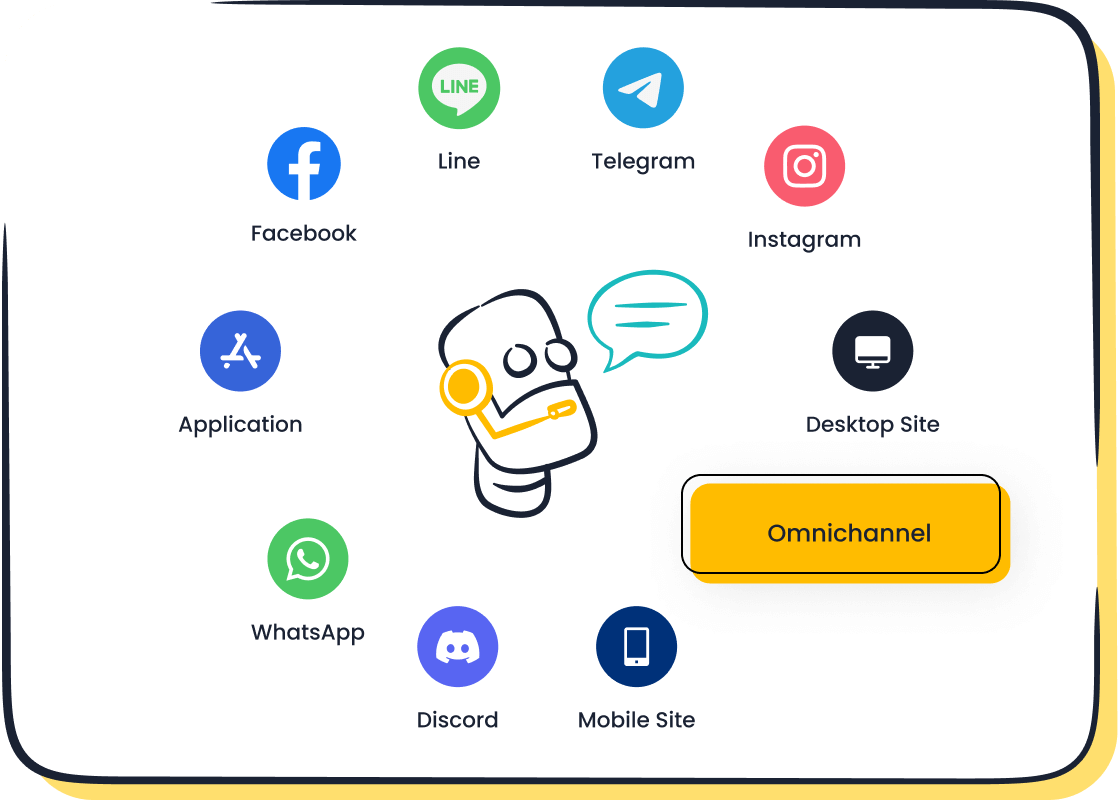
Sobot Chatbot simplifies the process for beginners. Its point-and-click interface allows you to create a chatbot without coding. The platform offers multilingual support, omnichannel integration, and AI-driven features like proactive messaging. These capabilities make it an excellent choice for businesses aiming to automate customer interactions efficiently.
Step 3: Design the Conversation Flow
Map out user interactions and responses.
A well-designed conversation flow ensures smooth interactions. Start by mapping out common user queries and the chatbot’s responses. Simplify paths to help users reach their goals quickly. For example:
- Use intuitive menus and quick reply options.
- Guide users back on track if conversations veer off course.
- Continuously expand intent coverage to handle diverse queries.
These strategies improve user satisfaction and engagement.
Use templates or pre-built flows for efficiency.
Many chatbot builders, including Sobot Chatbot, offer pre-built templates. These templates save time and ensure consistency. For instance, you can use a customer support template to handle FAQs or a lead generation template to capture user information. By leveraging these tools, you can create chatbot workflows quickly and effectively.
Step 4: Test and Refine the Chatbot
Importance of testing for functionality and user experience.
Testing ensures your chatbot performs as expected and delivers a seamless user experience. Before deployment, evaluate its ability to handle various scenarios, including edge cases. For example, test how it responds to ambiguous queries or incorrect inputs. This process helps identify gaps in the conversation flow and ensures the chatbot builder you use meets your business needs.
Key metrics can guide your testing efforts. These include response accuracy, user satisfaction, and engagement rates. For instance, a chatbot with a high response accuracy rate will provide precise answers, improving customer trust. The table below highlights essential metrics to track during testing:
| Metric | Description |
|---|---|
| Response Accuracy | Measure how accurately your chatbot responds to user queries. |
| User Satisfaction | Collect feedback to gauge user satisfaction levels. |
| Engagement Rates | Track how often users interact with your chatbot. |
| Error Rates | Monitor the frequency of incorrect or failed responses. |
| Response Time | Ensure your chatbot responds quickly to user inputs. |
| Retention Rates | See how often users return to interact with your chatbot. |
Gather feedback and make improvements.
Feedback is crucial for refining your chatbot. Gather input from users through surveys or direct interactions. For example, ask users if the chatbot resolved their issues or if they found the conversation intuitive. Metrics like customer satisfaction scores (CSAT) and resolution rates can also provide insights. A chatbot builder like Sobot Chatbot simplifies this process by offering built-in analytics tools to track these metrics. Use the data to tweak conversation flows, improve response accuracy, and enhance user engagement.
Step 5: Deploy and Monitor Performance
How to integrate the chatbot with your website or app.
Deploying your chatbot involves integrating it with your website or app. Most chatbot builders, including Sobot Chatbot, provide straightforward integration options. For example, you can embed the chatbot widget into your website or link it to messaging platforms like WhatsApp. This ensures your chatbot is accessible across multiple channels, enhancing customer reach. Sobot Chatbot’s omnichannel support makes this process seamless, allowing you to interact with users on their preferred platforms.
Tools for tracking performance and user engagement.
Monitoring your chatbot’s performance is essential for long-term success. Use tools like Chatbot Analytics or BotMetrics to track key metrics such as engagement rates, resolution rates, and response times. These tools provide insights into how well your chatbot retains user attention and resolves issues. For example, a high resolution rate indicates that your chatbot effectively handles user queries without human intervention. The table below outlines some popular tools and their features:
| Tool Name | Key Features | Best For |
|---|---|---|
| Chatbot Analytics | Bot-specific metrics, sentiment analysis, conversation funnel | Measuring user conversations |
| BotMetrics | Open-source, dynamic dashboard, on-premise installation | Flexibility and control |
| Manner | Developer-defined goals, message performance measurement | Optimization of interactions |
By leveraging these tools, you can continuously optimize your chatbot’s performance and ensure it meets user expectations.
Best Practices for Building Effective Chatbots
Designing User-Friendly Conversation Flows
Keep interactions simple and intuitive.
A chatbot's success depends on how easily users can interact with it. You should design conversation flows that are straightforward and easy to follow. Avoid overloading users with too many options or complex paths. Instead, visualize different conversation paths and model how the chatbot will respond to various user inputs. The table below highlights key practices for creating intuitive flows:
| Evidence | Description |
|---|---|
| Visualizing Conversation Paths | Map out all possible user inputs and the chatbot's responses. |
| Simulating Realistic Conversations | Test the chatbot with common user queries to ensure natural interactions. |
| Context Retention | Ensure the chatbot remembers user preferences and goals for better engagement. |
Additionally, chatbots should handle language nuances like slang or typos. Using natural language processing (NLP) helps the chatbot understand user intent and provide accurate responses. Drawing inspiration from successful chatbots can also guide you in creating effective conversation flows.
Use clear language and avoid technical jargon.
Your chatbot should communicate in a way that users can easily understand. Use simple, conversational language and avoid technical terms that might confuse users. For example, instead of saying, "Your query has been escalated to the next tier," say, "I’ve passed your question to a team member who can help." This approach ensures users feel comfortable and engaged during their interactions.
Importance of Testing and Feedback
Regularly test the chatbot for bugs and errors.
Testing is essential to ensure your chatbot performs as expected. Regularly simulate user interactions to identify and fix errors before they affect real users. For instance, testing can catch issues like incorrect responses or failure to understand specific queries. Fixing these problems early prevents the chatbot from learning faulty interactions. Studies show that 68% of users appreciate quick responses from chatbots, but 40% rate their experiences negatively when errors occur. Regular testing ensures your chatbot meets user expectations and maintains high performance.
Collect user feedback to improve functionality.
User feedback provides valuable insights into how your chatbot performs in real-world scenarios. Encourage users to share their experiences through surveys or ratings. For example, ask if the chatbot resolved their issue or if they found the conversation helpful. Use this feedback to refine the chatbot’s responses and improve its functionality. Platforms like Sobot Chatbot offer built-in analytics tools to track user satisfaction and engagement, making it easier to identify areas for improvement.
Ensuring Scalability and Flexibility
Plan for future updates and feature expansions.
Your chatbot should grow with your business. Plan for updates that add new features or improve existing ones. For example, as your customer base expands, you might need to add multilingual support or integrate the chatbot with new platforms. Customizable dashboards and real-time monitoring tools can help you track performance and identify when updates are needed. This ensures your chatbot remains effective as your business evolves.
Use analytics to identify areas for improvement.
Analytics play a crucial role in maintaining a scalable and flexible chatbot. Use tools to monitor key metrics like engagement rates, resolution times, and user satisfaction. For instance, a high engagement rate indicates that users find the chatbot helpful, while a low resolution rate might signal the need for better responses. Advanced platforms like Sobot Chatbot provide real-time monitoring and data-driven insights, helping you make informed decisions to enhance your chatbot’s performance.
Sobot Chatbot: A Leading Solution for Automated Chatbot Creation
Key Features of Sobot Chatbot
Omnichannel support and multilingual capabilities.
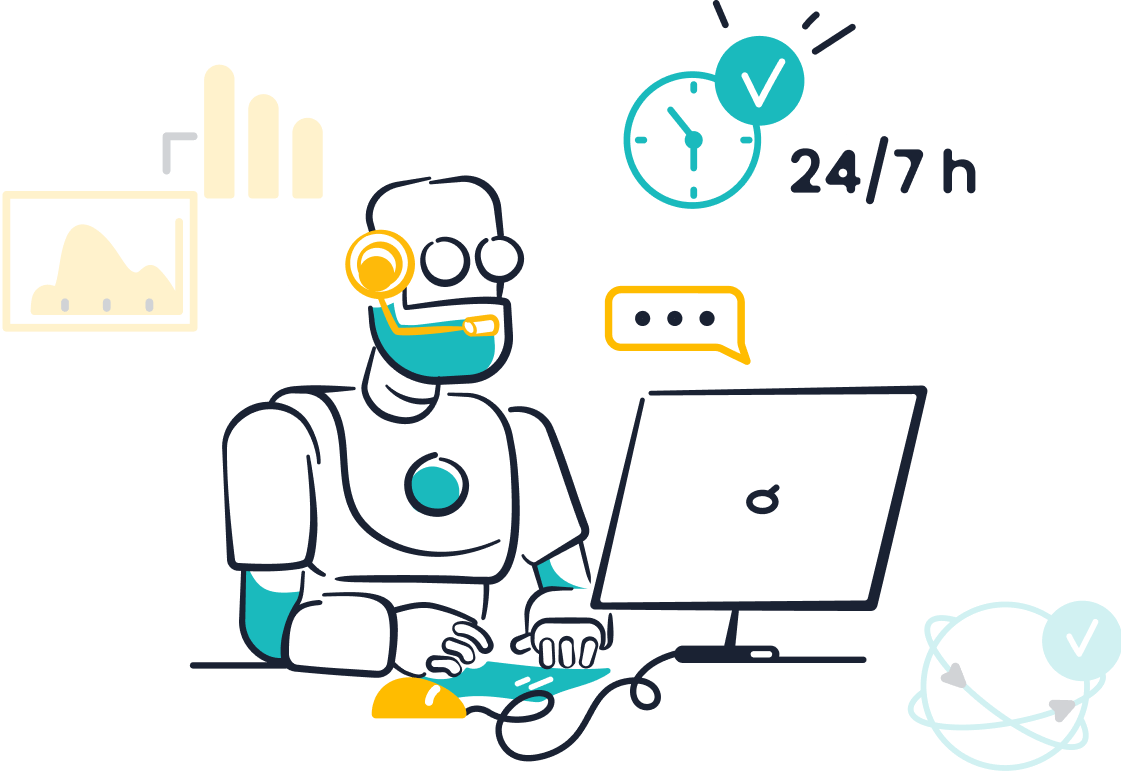
Sobot Chatbot excels in omnichannel engagement, allowing you to connect with customers across platforms like WhatsApp, SMS, and web chat. This feature ensures seamless communication, no matter where your audience prefers to interact. Its multilingual capabilities further enhance accessibility, enabling businesses to serve global customers effortlessly. With support for multiple languages, Sobot Chatbot ensures that language barriers never hinder customer satisfaction. These features make it an ideal chatbot builder for businesses aiming to expand their reach.
AI-powered automation and 24/7 availability.
Sobot Chatbot leverages advanced AI and natural language processing (NLP) to deliver accurate and personalized responses. Its machine learning algorithms continuously improve performance, ensuring your chatbot evolves with customer needs. The platform operates 24/7, providing uninterrupted support and resolving queries even outside business hours. This level of chatbot automation not only enhances efficiency but also ensures customers receive timely assistance, boosting overall satisfaction.
Benefits of Using Sobot Chatbot
Boosting efficiency and cutting costs.
Sobot Chatbot significantly reduces operational costs by automating routine tasks. It can handle over 80% of common inquiries, allowing your team to focus on complex issues. Businesses using Sobot report a 20% reduction in inbound discussion volume and a 96% increase in positive feedback. These metrics highlight its ability to streamline operations while maintaining high service quality.
| Metric | Value |
|---|---|
| Reduction in inbound discussion volume | 20% |
| Increase in positive feedback | 96% + |
| Correct answers provided by AI | Over 80% |
| Customer satisfaction rate | Over 95% |
Enhancing customer satisfaction and conversion rates.
Sobot Chatbot improves customer satisfaction by providing instant, accurate responses. Its proactive engagement features, such as real-time intent assistance, help boost conversion rates by 20%. Additionally, the platform’s sentiment analysis capabilities prioritize urgent cases, ensuring critical issues receive immediate attention. These benefits make Sobot Chatbot a powerful tool for enhancing both customer experience and business outcomes.
Success Stories with Sobot Chatbot
How OPPO improved customer service with Sobot.
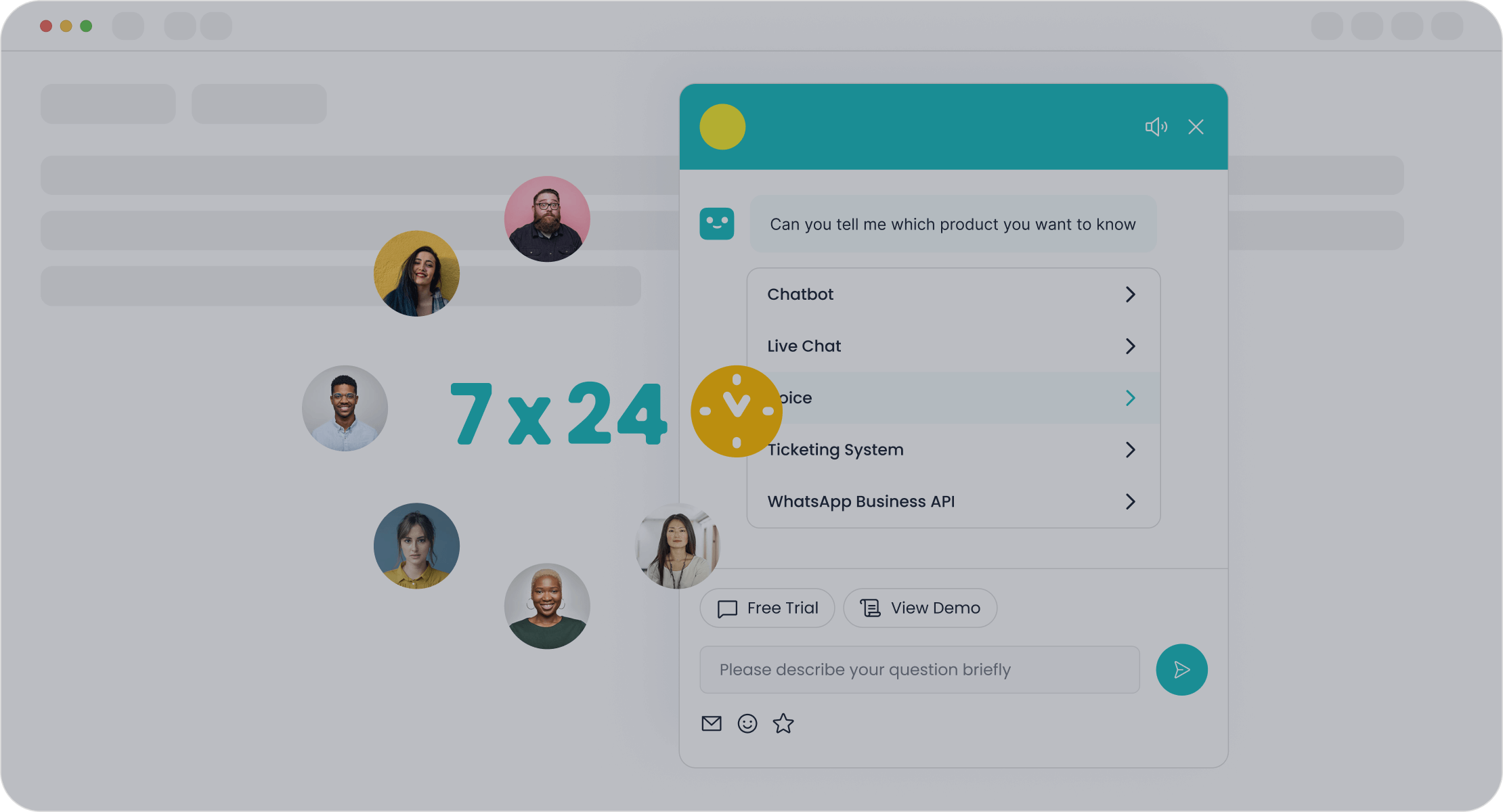
OPPO, a global leader in smart devices, partnered with Sobot to enhance its customer service. By integrating Sobot Chatbot, OPPO achieved an 83% chatbot resolution rate and a 94% positive feedback rate. The chatbot handled repetitive queries, freeing agents to focus on complex issues. This human-machine collaboration improved efficiency and customer satisfaction, leading to a 57% increase in repurchase rates.
Real-world results and customer feedback.
Sobot Chatbot has delivered measurable success across industries. Businesses report a 22.2% self-service resolution rate and a 97% customer satisfaction score. The platform’s ability to solve 85% of problems autonomously highlights its effectiveness. Customers consistently praise its intuitive interface and accurate responses, making it a trusted solution for modern customer service needs.

Automated chatbot solutions and no-code platforms have revolutionized customer service. They offer faster deployment, cost savings, and scalability, making them essential for businesses of all sizes. These tools also ensure continuous availability, providing 24/7 support to enhance customer satisfaction. The table below highlights their key benefits:
| Benefit | Description |
|---|---|
| Faster Deployment | No-code platforms enable rapid creation and deployment of AI applications, responding quickly to market demands. |
| Cost Savings | Automated chatbots reduce labor costs by handling routine queries, streamlining customer service interactions. |
| Scalability | Businesses can easily expand chatbot solutions without extensive coding, accommodating growing user demands. |
| Accessibility | No-code platforms democratize technology, allowing users without technical skills to implement AI solutions. |
| Customization | Highly customizable solutions enable tailored interactions and integration with existing systems. |
| Continuous Availability | Automated support provides 24/7 assistance, enhancing customer satisfaction and reducing wait times. |
Sobot Chatbot stands out as a leading no-code platform. Its AI-powered features, multilingual support, and omnichannel capabilities make it a reliable choice for automating customer interactions. By adopting Sobot Chatbot, you can streamline operations, reduce costs, and improve customer engagement. Explore its potential to transform your customer service today.
FAQ
What is the main purpose of an automated chatbot?
An automated chatbot helps you handle customer interactions efficiently. It answers common questions, processes requests, and provides support 24/7. For example, Sobot Chatbot can resolve up to 80% of routine queries, saving time and improving customer satisfaction.
Do I need coding skills to create a chatbot?
No, you don’t need coding skills. No-code platforms like Sobot Chatbot offer drag-and-drop interfaces. You can design workflows, customize responses, and deploy your chatbot easily. This makes chatbot creation accessible for everyone, even beginners.
How do chatbots improve customer satisfaction?
Chatbots provide instant responses, reducing wait times. They also offer personalized interactions using AI and NLP. For instance, Sobot Chatbot’s multilingual support ensures customers receive help in their preferred language, enhancing their experience.
Can chatbots handle complex customer queries?
Yes, chatbots can manage complex queries by integrating with AI and knowledge bases. However, they also escalate issues to human agents when needed. Sobot Chatbot uses real-time intent assistance to prioritize and address critical cases effectively.
How do I measure my chatbot’s performance?
You can track metrics like resolution rates, response times, and user satisfaction. Tools like Sobot Chatbot’s built-in analytics provide insights into engagement and efficiency. For example, a high resolution rate indicates your chatbot is effectively solving customer problems.
See Also
Simple Ways to Integrate Chatbots on Your Website
Building a Chatbot for Achieving Website Goals
Effortless Steps to Develop a Website Chatbot